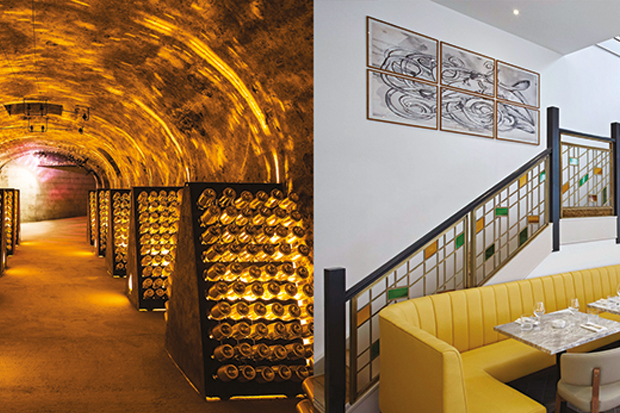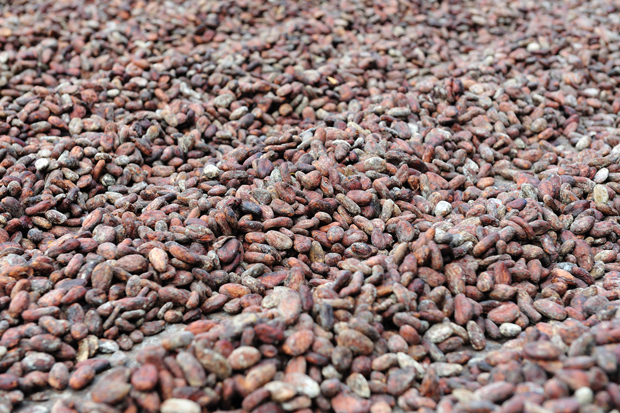Jonathan Ray visits the oldest rum distillery in the world and gets his hands dirty blending
My travels round the Caribbean wouldn’t be complete without a trip to Mount Gay, the longest-established rum brand in the world. The oldest surviving deed from the company shows that it was in operation as early as 1703 and it was quite probably established many years before that. Either way, it’s fair to say that Mount Gay knows what it’s about when it comes to making rum and I have to confess that I’ve always loved their stuff. Every drinks cabinet, back bar or shelf in the kitchen should have a bottle of Mount Gay Eclipse – for sipping by the fire in the winter and for sloshing into cocktails in the summer.
The distillery is based in the north of Barbados and my guide for the morning – Romal Jones – tells me that Barbados, meaning ‘bearded ones’, was the name given to the island by the Portuguese when they visited in 1536, thanks to the lush, ‘bearded’ fig trees that grew in abundance there. Well, I never knew that. Nor did I know that rum was originally called ‘Kill-Devil’ by the Barbadians who first distilled it. Romal proves to be full of nuggets like that.
It’s blisteringly hot as he takes me to see the original 1700s well that is still used to dilute the powerfully alcoholic rum made here, but only after having been triple filtered through coral. It’s as pure as you can get. We then wander off to see the sugar cane. Mount Gay has 320 acres of sugar cane fields, apparently, but still needs to import molasses from Brazil.
Brazil?
“Yes,” says Romal. “The soils of the other Caribbean islands are mainly volcanic and too different from that of Barbados and so sugar cane grown elsewhere just wouldn’t be a good mix with our own. The Brazilian molasses are a perfect fit for us.”
Romal explains that rum is made simply from water, yeast and sugar. Here at Mount Gay they use the by-product of sugar production – molasses – rather than sugar cane juice (as the French-speaking islands do with rhum agricole) and sell the sugar on.
As we head back to the distillery and don our hard hats, he further explains that Mount Gay uses two systems of fermentation: uncontrolled in open air vats and controlled in sealed ones. They also – crucially – use two systems of distillation: double distillation in copper pot stills and continuous single distillation in column stills.
“The pot stills give body and robustness to the rum,” says Romal, “and the column stills give smoothness and elegance. The two distillates are aged separately in oak barrels before being blended together and aged again and bottled. So, we use two fermentations, two distillations and two periods of ageing, and since the average temperature in Barbados is 86F/30C, our spirits mature in barrel about five times faster than brandy in cognac or whisky in Scotland.”
Indeed, so bloody hot is it here and so humid, they can lose some 20 per cent of a barrel to evaporation every year, the fabled Angels’ Share.
After seeing the well, the sugar cane fields, the fermentation tanks, the stills, the furnace room and the barrel hall, I’m aching to taste some rum. First, though, Romal insists I taste some neat molasses. I dip a finger in pot and lick it. It’s deliciously treacly and I’m immediately transported back to school where we would have black treacle on hot buttered toast. I prepare to double dip but Romal cautions me, “Man, it’s tasty all right but it’s also a fine laxative, take care.” I decide I’ve had enough.
We then head to the lab to meet Twanna Waterman who has some rum to show me. We taste an un-aged pot still rum and some barrel-aged; some un-aged column still rum and some barrel-aged. They are extraordinarily different despite being made from exactly the same molasses and aged in exactly the same barrels. Only the distillation processes are different and what an effect this has!
The un-aged (white) column still rum is soft, supple and creamy; the aged (7 years) is creamy too but with buckets of toffee and citrus notes and a light touch of vanilla. The un-aged (white) pot still rum is redolent of pear drops with a hint of liquorice; the aged (7 years) is madly complex with molasses to the fore plus something floral and grassy and spicy.
I then taste the Mount Gay range. The Pure Silver, a white rum that’s clean and aromatic with a hint of banana and ideal for cocktails; the Eclipse, my old favourite and wonderfully, teasingly complex; the Black Barrel, a small batch blend of 2-7 year-old rums, mostly pot still, aged in charred Bourbon barrels; the XO, a blend of 8 to 15 year-old rums, richly flavoured and beautifully balanced; the 1703 Old Cask Selection, an absurdly fine rum created from almost fifty different blends and full of spice, vanilla, toffee apple, caramel, toast and pepper.
Twanna then invites me to blend my own rum, using 2 year-old column still rum, 7 year-old column still rum and 3 year-old pot still rum. I get to work with a pipette, a measuring flask and a calculator trying to work out my ratios. I sip, slurp and swill as I go and find all the rums slip down awfully easy. Indeed, having tasted the range without a spittoon in sight, I find I’m rather light-headed and warming to my task
“Leave some for your final blend!” exclaims Twanna.
I do – just – and present my blend to her and Romal for their comments. They deliberate for a while and declare it spot on. Phew! Indeed, now I think about it I’m rather proud of it. I tell them I used three measures of the 3 year-old pot still and two measures each of the 2 year-old and 7 year-old column stills.
Twanna is so impressed that she promptly recreates my blend in greater quantity and bottles it for me there and then. It’s my very own, unique, bespoke Mount Gay blend and I’m chuffed to bits.
The post Mount Gay Rum appeared first on The Spectator.
Got something to add? Join the discussion and comment below.
Get 10 issues for just $10
Subscribe to The Spectator Australia today for the next 10 magazine issues, plus full online access, for just $10.












Comments
Don't miss out
Join the conversation with other Spectator Australia readers. Subscribe to leave a comment.
SUBSCRIBEAlready a subscriber? Log in